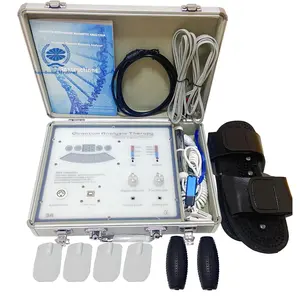Phổ biến trong ngành của bạn






Không Dính Vuông Bánh Mì Nướng Hộp Vàng Carbon Thép Sóng Bánh Mì Bánh Khuôn Nướng Công Cụ Bakeware Bánh Mì Loaf Pan Với Nắp Và Bìa
71.028 ₫
Đơn hàng tối thiểu: 24 Cái
Vận chuyển mỗi chiếc: 52.698 ₫



Tùy Chỉnh Vòng Hình Chữ Nhật Vuông Hình Bầu Dục Hình Dạng Trung Nướng Khuôn Không Dính Muffin Chảo
343.681 ₫ - 394.597 ₫
Đơn hàng tối thiểu: 100 Cái
Vận chuyển mỗi chiếc: 216.901 ₫



Khuôn bánh mì hình chữ nhật khuôn bánh mì nướng khuôn bánh thép carbon bánh nướng bánh nướng bánh nướng tự làm không dính
11.711 ₫ - 13.748 ₫
Đơn hàng tối thiểu: 1000 Cái



Chảo Nướng Bánh Mì Nhỏ Khay Nướng Bbq Lá Nhôm Tròn Dùng Một Lần Chảo Bánh Để Nướng
764 ₫ - 1.019 ₫
Đơn hàng tối thiểu: 1000 Cái







18x13 inch Hợp kim nhôm nướng lò Khay bánh bánh mì tấm Pan cho nướng
Sẵn sàng vận chuyển
80.193 ₫ - 98.013 ₫
Đơn hàng tối thiểu: 100 Cái
Vận chuyển mỗi chiếc: 317.460 ₫







35-tin không dính Muffin Pie Pallet vuông ciabatta CuộN Pan Brownie cắn Pan Mini Vuông muffin cupcake nướng khuôn khay
636.446 ₫
Đơn hàng tối thiểu: 100 Đơn vị
Vận chuyển mỗi chiếc: 130.090 ₫






Baguette khay nướng không dính đục lỗ Silicone bánh sandwich pháp bánh mì CuộN Pan Ổ khuôn bánh mì crisping khay cho bánh bánh mì
Sẵn sàng vận chuyển
81.466 ₫ - 86.557 ₫
Đơn hàng tối thiểu: 200 Cái
Vận chuyển mỗi chiếc: 20.367 ₫





Baguette khay nướng không dính đục lỗ Silicone bánh sandwich pháp bánh mì CuộN Pan Ổ khuôn bánh mì crisping khay cho bánh bánh mì
Sẵn sàng vận chuyển
81.466 ₫ - 86.557 ₫
Đơn hàng tối thiểu: 200 Cái
Vận chuyển mỗi chiếc: 21.130 ₫






Baguette khay nướng không dính đục lỗ Silicone bánh sandwich pháp bánh mì CuộN Pan Ổ khuôn bánh mì crisping khay cho bánh bánh mì
Sẵn sàng vận chuyển
81.466 ₫ - 86.557 ₫
Đơn hàng tối thiểu: 200 Cái
Vận chuyển mỗi chiếc: 20.367 ₫






Công nghiệp khay nướng aluminized thép Brownie cắn Pan 48 cup Mini Vuông cupcake Khay muffin Pie Pallet để nướng
636.446 ₫
Đơn hàng tối thiểu: 100 Đơn vị
Vận chuyển mỗi chiếc: 130.345 ₫






Khay Nướng Bánh Mini Baguette Không Dính Silicone Bánh Mì Pháp Pan Loaf Pan Bánh Mì Giòn Khay Muffin Khay Cho Bánh Mì Bánh Mì
Sẵn sàng vận chuyển
68.737 ₫ - 73.828 ₫
Đơn hàng tối thiểu: 200 Cái
Vận chuyển mỗi chiếc: 20.367 ₫






Tùy chỉnh khay aluminized thép không dính Brownie cắn Pan Mini Vuông muffin cupcake Pan Muffin Pie Pallet
509.157 ₫
Đơn hàng tối thiểu: 100 Đơn vị
Vận chuyển mỗi chiếc: 130.345 ₫
Các tìm kiếm liên quan:
khay nướng kim loại gangbakeware biscuit khay nướng kim loạikhay nướng cực lớnphẳng nướng khay bán buônkhay nướng tròn màu đỏkhay nướng lasagnakhay nướng cho brownieskhay nướng 48cm x 34cmkhay nướng tròn màu trắngkhay nướng màu hồngkhay nướng unicasakhay nướng có tay cầmkhay nướng chất lượng tốt60 80cm khay nướngkhay nướng 600 400





Khuôn Nướng Bánh Mì Chống Dính Bằng Silicon, Khuôn Nướng Bánh Hình Chữ Nhật Dùng Trong Gia Đình, Làm Bánh Mì, Làm Bánh Tự Làm
Sẵn sàng vận chuyển
63.645 ₫ - 68.737 ₫
Đơn hàng tối thiểu: 200 Cái
Vận chuyển mỗi chiếc: 22.403 ₫






Thương Mại 3 Boong 9 Khay Bánh Mì Công Nghiệp Nướng Gas Oven Thiết Bị Bánh Máy
76.118.911 ₫
Đơn hàng tối thiểu: 1 Bộ
Các danh mục hàng đầu
Giới thiệu về khay nướng ciabatta
Ngày nay, khay nướng ciabatta không còn là điều mới mẻ đối với những người bình thường và không còn bị coi là điều cấm kỵ khi sử dụng. Nếu bạn đang tìm kiếm niềm vui áp chót đó, bạn phải kiểm tra sự bao la. Bộ sưu tập khay nướng ciabatta tại Alibaba.com. Những gợi cảm và cong. khay nướng ciabatta đáng giá từng xu và chắc chắn làm cho đêm đó trở nên đặc biệt đối với bạn. Những con búp bê này có ngoại hình giống như thật, bắt đầu từ tóc đến ngón chân theo mọi nghĩa.
Cho dù bạn là một người cô đơn đang tìm kiếm một người bạn đời như cuộc sống hay một cặp vợ chồng muốn thêm gia vị cho cuộc sống của họ, bạn đều có thể sử dụng chúng . khay nướng ciabatta để đốt cháy ngọn lửa đó. Những ngoạn mục. khay nướng ciabatta có thể tùy chỉnh theo mong đợi của bạn. Những điều tuyệt vời. khay nướng ciabatta có sẵn ở cả phiên bản dành cho nam và nữ và được làm từ silicone cấp y tế để sử dụng an toàn. Hãy sở hữu ngay bây giờ và tận hưởng một đêm đam mê và cháy bỏng.
Alibaba.com cung cấp những điều tuyệt vời này. khay nướng ciabatta ở mọi hình dạng cơ thể, kích thước và sắc tộc. Dù yêu cầu của bạn đối với. khay nướng ciabatta, bạn có thể tải tất cả chúng trên trang web. Những cái này. khay nướng ciabatta được tạo hình bởi những người thợ thủ công giỏi nhất và mọi chi tiết phức tạp đều được kiểm tra kỹ lưỡng. Những con búp bê này có mắt, tóc, móng tay và tất cả các bộ phận cơ thể khác tương tự như người thật.
Alibaba.com cung cấp nhiều loại. khay nướng ciabatta có thể giúp bạn mua các sản phẩm phù hợp với ngân sách và các yêu cầu khác của bạn. Các sản phẩm này an toàn để sử dụng, được chứng nhận và thân thiện với môi trường trong tự nhiên. Đơn đặt hàng OEM có sẵn trên các sản phẩm này.
Cho dù bạn là một người cô đơn đang tìm kiếm một người bạn đời như cuộc sống hay một cặp vợ chồng muốn thêm gia vị cho cuộc sống của họ, bạn đều có thể sử dụng chúng . khay nướng ciabatta để đốt cháy ngọn lửa đó. Những ngoạn mục. khay nướng ciabatta có thể tùy chỉnh theo mong đợi của bạn. Những điều tuyệt vời. khay nướng ciabatta có sẵn ở cả phiên bản dành cho nam và nữ và được làm từ silicone cấp y tế để sử dụng an toàn. Hãy sở hữu ngay bây giờ và tận hưởng một đêm đam mê và cháy bỏng.
Alibaba.com cung cấp những điều tuyệt vời này. khay nướng ciabatta ở mọi hình dạng cơ thể, kích thước và sắc tộc. Dù yêu cầu của bạn đối với. khay nướng ciabatta, bạn có thể tải tất cả chúng trên trang web. Những cái này. khay nướng ciabatta được tạo hình bởi những người thợ thủ công giỏi nhất và mọi chi tiết phức tạp đều được kiểm tra kỹ lưỡng. Những con búp bê này có mắt, tóc, móng tay và tất cả các bộ phận cơ thể khác tương tự như người thật.
Alibaba.com cung cấp nhiều loại. khay nướng ciabatta có thể giúp bạn mua các sản phẩm phù hợp với ngân sách và các yêu cầu khác của bạn. Các sản phẩm này an toàn để sử dụng, được chứng nhận và thân thiện với môi trường trong tự nhiên. Đơn đặt hàng OEM có sẵn trên các sản phẩm này.











